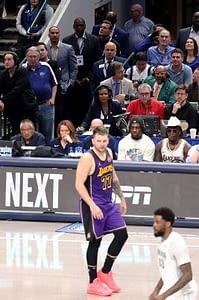Rory McIlroy’s Emotional Journey to Masters Glory
In the world of golf, few moments are as iconic as winning the Masters at Augusta National. For Rory McIlroy, this victory was more than just a win; it was the culmination of years of perseverance, heartache, and determination. On a Sunday that will be remembered for its emotional highs and lows, McIlroy finally donned the coveted green jacket, a symbol of his triumph over a decade-long struggle.
As McIlroy walked up the final fairway, not once but twice, with a chance to win the Masters, the tension was palpable. He had to fend off multiple players and overcome his own mistakes during an emotional 19 holes of golf. When he finally dropped to his knees, overcome with emotion, he stood near the Augusta National clubhouse and paused. He had conquered his Mount Everest. With tears in his eyes, he turned to his friends and uttered the words he had been hoping to say for over a decade: “I got to go get a green jacket.”
On that Sunday, the pressure of an 11-year major drought weighed heavily on McIlroy’s shoulders. Augusta’s roars were ready to serenade him during his breakthrough, but as he navigated what he called a roller-coaster round of golf, whispers of doubt filled the air.
- “Oh my God,” a patron exclaimed after McIlroy made a double bogey on the first hole.
- “It’s the nerves,” said another, as McIlroy handed Bryson DeChambeau the lead on the second.
- One patron covered his face with his hands: “He’s doing it again.”
When McIlroy double-bogeyed the 13th hole after donating his ball to Rae’s Creek, added another bogey on 14, and countered his birdie on 17 with a bogey at the last hole, it seemed like another opportunity squandered on the biggest stage yet. Even McIlroy thought it. “There were points on the back nine today when I thought, ‘Have I let it slip again?'” McIlroy admitted. “My battle today was with myself. It wasn’t with anyone else.”
This victory was a feat over a decade in the making. The close calls and heartbreaks of the past left scars that lingered between victory and defeat. It was fitting that this is how it happened, that a six-shot lead with eight holes to play was not enough, that every shot McIlroy hit felt like it carried a seismic gravity that could place him once again on the losing side. In the end, it was here, after a playoff, where he found relief.
“It’s the best day of my golfing life,” McIlroy said. “I’ve literally made my dreams come true.”
A win at St. Andrews in 2022 would have been poetic. Victory in the U.S. Open at the Los Angeles Country Club in 2023 would have been a tangible testament to the evolution of his game. Triumph at Pinehurst last year could have been an epic way to end his major drought. Yet none of those wins would have answered the question that remained: Could McIlroy win at Augusta?
For McIlroy, this tournament’s meaning is personal because it has marked his golfing journey. Memories of watching the tournament when he was just 7 years old with his father flooded into his head when he spoke Tuesday and again Sunday night. “I think all that sort of comes back to me,” McIlroy said. “Remembering why I fell in love with the game.”
Two years after turning professional in 2007, McIlroy debuted at the 2009 Masters and finished tied for 20th. He has played in every one since—17 in total—and endured close calls and no-shows. Over nearly two decades, the golf world and its marquee tournament have changed; so has McIlroy.
The overgrown and dark curly hair that framed his face when he was 19 years old, driving down Magnolia Lane, is gone. In its place, McIlroy has a tighter cut. He wears the passage of time on his graying temples, an indication of how long he has been around the sport and a reminder of how many times he has had a chance to do what he did Sunday by finally reaching the sport’s apogee: a career Grand Slam.
“I think I’ve carried that burden since August 2014,” McIlroy said. “It’s very difficult. Today was difficult.”
McIlroy talked at length about the nerves he felt throughout Sunday. He spoke about pressure, both self-imposed and what he has felt when greats such as Jack Nicklaus and Tiger Woods have predicted that McIlroy would win the Masters, speaking about it as if it was a matter of fact.
Yet, what Sunday’s performance showed again in a frenzied snapshot was that McIlroy has never been Nicklaus or Woods. It’s not that McIlroy’s game isn’t as good. But his journey has looked a lot like how this week transpired with its four double bogeys and enigmatic swings: The ups and the downs are as much a part of the fabric of his fable as anything.
“You have to be an eternal optimist,” McIlroy said. “I truly believe I’m a better player now than I was 10 years ago.”
His creed of patience, belief, and resilience in the face of repeated disappointment reached its nadir at Pinehurst last year. The defeat left the immediate future of McIlroy’s career unsettled and in need of what seemed like a hard reset. McIlroy obliged, taking time off and walking around New York City by himself, eventually hitting balls into a simulator as he worked on his swing.
A technical tweak, a mental recharge, and a new year brought an updated version of McIlroy. He won at Pebble Beach then again at the Players Championship, acknowledging how Scottie Scheffler‘s historic year had motivated him and showcasing a striking balance of control and aggression.
And yet the question remained, now more than ever: Could he do it at the Masters? On Sunday, he delivered the long-awaited proof that he could. It also allowed McIlroy to show how much he wanted it.
“This is my 17th time here, and I [had] started to wonder if it would ever be my time,” McIlroy said. “What came out of me on the last green there in the playoff was at least 11 years, if not 14 years, of pent-up emotion.
“I got the job done.”
In a video posted by the PGA Tour earlier Sunday, McIlroy is seen being asked about his jacket size. He is a 38 or 40 short, he says, depending on how much he is eating each week.
“I like it a little more European style,” McIlroy says in the video. “A little more fitted, a little more tapered and pinched in.”
On Sunday, Scheffler helped McIlroy slip into the green jacket. The size was 38 regular, slightly big and not tailored to McIlroy’s preferred measurements just yet. But as his shoulders hugged the wool fabric, McIlroy shut his eyes, raised his hands, and tilted his head to the sky.
The fit didn’t need to be perfect; everything else already was.
Originally Written by: Paolo Uggetti





















